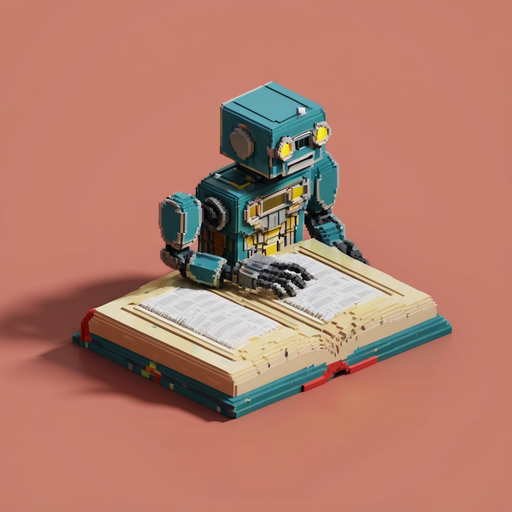The AI Tornado
The High Tech Marketing Theory that works: the Tornado
Today’s hot disruptive technology has one name, Generative AI. We know it’s disrupting things and generating tons of investment and tons of money with lots of companies acting hastily. But what should we expect of the market? What is an engineer to make of the upcoming future? I don’t know but during the 90’s a tech marketing master named Geoffrey Moore wrote two books, Crossing the Chasm and Into the Tornado. Together I find them a perfect description of what tech “distruption” really means, and how a disruptive technology flows through markets. Does it still apply to today’s digital SaaS products? I think so. And even if it doesn’t I’m going to fit a square into a circle and see what happens.

So, what is Tornado Theory, as I understand it? This is an older name for what we now call high growth markets, aka the land of startups and aspiring unicorns. In these scenarios, there’s existing or old markets comfortable with some old timey slow and reliable solution. Some new technology shows up and impresses the high tech audience (my crowd) until it gains the attention of some small set of visionary business leaders that see a bit into the future. Then most startups die as they fall into a chasm where they fail to market the product to the much larger and more pragmatic customers that their investors need. The few startups utilizing the new tech that make it through go onto strategic market land grabs until the large pool of pragmatic customers feel ready to buy. Then suddenly every pragmatic customer wants the product and they want it now, they want it fast, and they want it from the market leader. Those that win in the tornado come out unicorns.
Successful companies need to deploy different leadership qualities to survive each stage. At the visionary stage they need to get product innovation right. Just after the chasm, they need to keep developing the product, partner aggressively, and focus on the customer. But as soon as the pragmatic customers decide to start buying in mass, successful companies should, according to Moore’s theory, completely forget the customer and their many particular wants and desires and instead 100% focus on delivering the product as fast as possible. Any lost sale due to lack of supply goes to some other competitor for the lifetime of the market. Winners sell hard and fast with a much lower emphasis, even no emphasis, on hard product innovation.
As this tornado is crushing older business models and leaving everyone wondering who will survive and who will be the winner, the market naturally sorts companies into three distinct groups: Gorillas, Chimps, and Monkeys. Why these three groups? Because they give nice analogies to relative strength between each player. Gorillas are, well, the winner of the tornado. They set the standard, they define the product category, they take the largest market share and the largest portion of the profits. The chimps are the competitors with equally good, or even sometimes better, technology but who failed to work the market right. They survive by being the nicer company that still cares about the customer and does some key innovation the Gorilla doesn’t do. The monkeys are everyone else that’s busy trying to provide low cost clones of the top line product. Its a little gross and brutal, but so are the market machines that produce unicorns.

Now, this theory worked well in the 90s and 2000s when products were generally hard physical things that required a purchase and support from slower distribution channels like retail stores. These days tho high tech products go through the internet with either self-service SaaS or some convoluted enterprise sales flow. Either way, things move faster. I’m too much of an engineer to exactly know how this changes Moore’s theory but I’m pretty sure it just means some parts of the cycle compress and overlap more than they used to. Either way, I’m pretty sure this Tornado is tearing through the tech world right now in the form of Generative AI. So let’s cut to the chase.
Aligning AI: with our tornado market theory
Today’s disruptive technology is most obviously generative AI, in the form of Large Language Models, Multimodal Modals, and Image/Video generation. But what’s not clear is where the Generative AI market is in terms of the standard tech adoption life cycle. Nor is it clear what the true “whole product” solution is. Aside: the whole product is the minimal set of associated products or services needed to maximally leverage the disruptive technology. Also, with the entire space of Generative AI, there’s likely multiple actual markets. So for simplicity, I want to focus on Large Language Models as the baseline disruptive technology.
These started pretty early in machine translation where transformers were first applied. Both my old team, Google Translate, and our up and coming competitor, DeepL, demonstrated their visionary behavior. Google Translate partially adopted transformers but also generally favored an alternative technology that turned out to be not super discontinuous. DeepL instead launched fast with transfomers to be the first on the market with a full transformer generative AI product. That was the visionary stage, I think.

Then the market wandered through a variety of other niche markets that were larger in size. I wasn’t totally paying attention at this time since I was still with Google Translate, but looking back I’d say companies like Jasper were a key niche market for transformers, now in the form of General Pretrained Transformers or GPT for short. And OpenAI was the leading vendor for transformers. Others were competing and trying things out, but they were building, serving, and hosting the whole core product pretty effectively.
Then ChatGPT came out and absolutely crushed the bowling alley by gaining 100 million users in light-speed. That week made it absolutely clear that transformers had left the chasm hard. They left the world of niche markets with zero looking back. They had started a tornado. And everyone was buying. A bajillion startups were using OpenAI’s APIs to build thin wrappers that then sold a generative AI product to some niche audience, all while more and more customers consolidated around OpenAI’s product and standards.

Now we have a transformative technology, transformers, flowing through the market with clear players. It’s teetering now on main street. What’s not clear is what exactly is the whole product solution that wraps around transformers to make a truly commoditized product any customer can leverage with glee and satisfaction. Nor is it clear who is going to make it through the tornado and end up on top. But let’s make some wild assertions.
Let’s do some positioning Open AI and everyone else
Moore sets out a few key criteria for placing each company into the Gorilla, Chimp, and Monkey bucket. With Gorilla’s there’s only one. They define the product and the standard that everyone competes with. They get the best profit margin and as they sell, they get stronger. The chimps are solid alternatives that just didn’t quite get main street customer attention as fast. Maybe they sold too slowly for “reasons”. Monkeys are all the companies that sell a product similar to the Gorilla but with key features missing and much lower cost, primarily because they’re not setup to push the market forward.
With that reminder, I’m going to throw down some hot takes.
Right now, OpenAI is clearly the market leader. They are the gorilla. They almost committed suicide with the Board firing Sam Altman, but with them back they’re likely stronger than ever. Why are they the gorilla? Well first, Sam Altman is no dummy. He’s from Y-Combinator and knows how high tech market works and he likely wants to be the winner, even if he doesn’t have an equity stake in the company. More importantly tho, if you look at literally any other LLM product such as LangChain, Pinecone, and any open source product, they integrate with the OpenAI API format. Even brand new open source models find silly ways to fit into OpenAI’s function calling format, however painful it is. I haven’t seen anyone do that for Anthropic’s API, Co:here’s API, and especially not for any of Google’s APIs. So, gorilla is now identified.

And who are the chimps? The other companies developing and furthering the technology but not taking a market leadership position. Clearly this is Anthropic and Co:here. Anthropic has been pushing forward hard with aligned AI and constitutional AI to carve out their premium positioning. Cohere has been….I’m not quite sure what they’ve been doing but it looks like they’re doing well. Unless Sam Altman gets fired again, neither company will replace OpenAI but they’ll keep going and provide solid meaningful alternatives.
But where does Google live? They invented transformers in the first place. They even have a fancy new model called Gemini that they’re about to release. But, they dropped the ball hard in a few ways. Just days ago with Gemini they made what I believe is a hard fatal mistake. They put out a great video that advances customer perception of how they could use generative AI and then they made clear that they did lots of careful behind the scenes editing to make that happen and they didn’t even release the top line model with the video. This means they pushed the market demand forward and expanded the whole product and will be absolutely unable to sell the promised product. They put a delicious lunch on the table and said to every single competitor “Here, eat my lunch. I won’t be doing so”. Whoever actually delivers the product described in the Gemini video will crush it financially, and it won’t be Google. Given Google’s inability to ship, they’re not a gorilla, not a chimp, not even a monkey. They’re a dying gorilla. It won’t kill Google overall, but it puts them out of the game in this new market for sure.

Now what about my most controversial statement? That Open Source Models are monkeys? For the consumer market this is maybe not true. Perhaps there’s a key consumer market that needs and wants fully local and private models. And perhaps there’s enterprise customers that absolutely need 100% on premise solutions. Those exist, but they’re not the size of the rest of the market. Open source model developers and hosts will do well in those markets but they without a doubt won’t be unseating OpenAI as a Gorilla. For OpenAI’s key market, they’ll be a low cost and low latency clone. Already Together Compute, which I adore a lot, is selling a whole suite of open source models as a service and marketing it as both faster and cheaper than OpenAI’s services. They don’t describe any key innovations that go beyond cost and speed. That’s clear monkey activity as per Moore. Breaks my heart to say it, but if they act appropriately, they can still make a good deal of money, as long as they don’t get aggressive and pretend to be a Gorilla in OpenAI’s market. Instead it’s for them to develop a side market that OpenAI doesn’t care about and try to position themselves as a market leader.
Handwaving towards the future
Now, what is the future like? I suspect we’re still figuring out the whole product solution. I’m pretty sure the whole product includes at a minimum:
- A Large Language Model, ala GPT-4
- Function calling, as found in GPT-4
- A semantic vector service like Pinecone
- A retrieval augmented generation (RAG) setup like LangChain
- Hosting for all this
For the last year those were mostly sold separately sold separately with OpenAI, Pinecone, LangChain, and probably Azure or AWS being the key providers. But now with OpenAI’s Assistants API (and the consumer facing GPTs) we can see OpenAI doing exactly what Moore would expect. They are designing out their old partners and commodotized the whole product into a single bundle that OpenAI sells. It may not be the best overall solution, but in majority markets with pragmatic buyers that want a clear singular standard they can rely on, this strategy often works really well and creates the winner. So assuming OpenAI doesn’t lose the ball, they look to be the winner.

What’s after that? I suspect with AI assistants serving as the commodity whole product, once it gets 100% worked out and crystalized into a standard we’ll see OpenAI start to go back to customer first behaviors as they serve the main market with +1 niche solutions. Already I expect that OpenAI itself wouldn’t even be building out these niches but instead leverage a two sided market place (i.e. the GPTs store). If they do that, then it really is game over for the market with OpenAI being the new Google in the Generative AI market.
But, let’s wait and see.